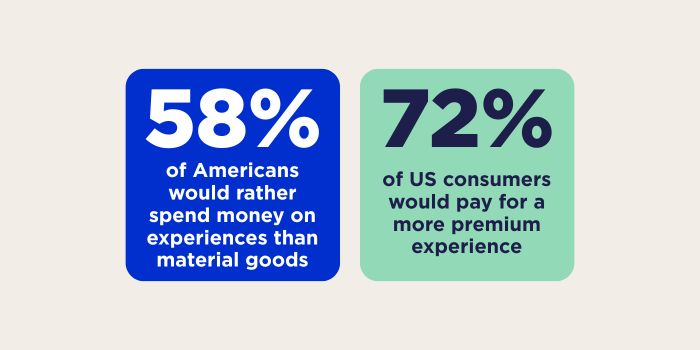While discounts still have their place in the marketing calendar, relying on them as the default tactic is a losing strategy. Especially when private label's star is rising.
Private-label products aren’t afterthoughts anymore. US store brands hit record highs for market share this year, with private label now representing over 20% of sales in units and dollars.
And private labels aren’t just valuable in their creators’ eyes: over 80% of US consumers now rate their quality as equal or better than national brands.
With opinion shifting and tariffs testing brand and consumer limits, "pick me” comes down to creating real value that shoppers remember – and that retailers support.
What’s a brand marketer to do? We’ve got a few ideas.
It’s easy to see why discounts are seasonal darlings. They’re easy to plan, simple to execute, and get sales results – at least in the short term. But under the surface, they’re eating away at the exact things that make your brand desirable. Over time, constant discounting:
- Erodes consumer trust.
- Diminishes brand equity.
- Creates unsustainable pricing expectations, leading to consumer disappointment (or following the discounts to another brand).
- Becomes a vicious cycle leading to underperforming.
Meanwhile, retailers demand price support, procurement teams watch ROI like hawks, and shoppers are changing their loyalties at the speed of a swipe. All of this means that your margin’s disappearing, while the pressure to discount more and further continues to build.
The real private-label threat isn’t affordability – it’s a growing perception of relevance and quality.
On top of that triple threat, retailers give their brands prime placement. In-store, your brand’s fighting for space against a better-supported rival. And online, your product’s likely not making the top search results without a retail media investment to turn algorithmic preference in your favor.
Finally, they’re a cash cow for retailers. Kirkland Signature just celebrated its 30th anniversary as Costco’s crown jewel, bringing in $86 billion in annual sales – a whopping third of the retailer’s total.
With the average attention span down to just eight seconds, brand survival means standing out – immediately and impactfully.
CPG brand and shopper marketers need new strategies to prove value in that moment of choice.
Great value matters more than price. Shoppers want to know what’s in it for them when they choose your brand – and that doesn’t always have to mean money off.
Picture this: You’re running a promotion that doesn’t cut into your margin but delivers higher perceived value to shoppers. Even better, it tells your brand story, differentiates you from the crowd, and makes your brand feel relevant and memorable.
Best of all? It’s affordable to run – and it’s proven to deliver results.
That’s the beauty of experience-led value. And here’s why it works:
- People don’t just buy with their heads and wallets. They make emotional decisions and buy with their hearts.
- 90% of financial decisions are emotional. And yet, most promotions are rational (“Save $1,” “Get 2 for 1”).
- Shoppers aren’t always chasing the lowest price. They’ll pay up to 16% more when the experience feels tailored, interesting, and above all, human.
Think about your last memorable purchase. Was it special because of the price or because of how it made you feel?
Chances are, it was the latter – and the numbers back that up.

Consumers won’t remember prices as much as they remember moments. Brands that invest in making those moments memorable win across the board. They:
- Differentiate from private brands by building emotional connections.
- Justify premium pricing by communicating their brand story and benefits.
- Protect their hard-earned brand equity.
- Get rewarded in gold with first-party shopper data at the point of sale.
That’s what brands who default to discounts stand to lose. And it’s a price no brand can afford to pay in 2025.
Experience-led incentives offer a smart alternative: a value exchange that delivers more of a shopper reward at less of a cost to brands.
The positive effects are cumulative: because every shopper gets something genuinely valuable, engagement and participation go up. (So do data capture, customer satisfaction, repeat purchases, and word of mouth.)
At the end of the day, experiences shape brand perception. When you invest in the right ones, they add priceless value.
One of the trickiest dynamics in promotional planning is the retailer relationship.
Securing secondary space or off-shelf visibility isn’t just about who pays more. Retailers want promotions that catch shoppers’ attention, inspire impulse purchases, and boost the impact of the whole display.
Experience-led promotions offer what traditional discounts rarely do:
- Energize displays.
- Add perceived value without cutting prices.
- Keep basket sizes intact.
- Naturally incentivize repeat purchases to get even more of that added value.
You’ve just made it exponentially easier to justify visibility for your brand and future relationships with retailers.
Moving away from discounts might feel unfamiliar or even risky – especially when they’re quick to implement and known to boost sales. But weigh this against the long-term damage they can do to your brand, and the equation changes.
With the right partner, brands can:
- Deliver high perceived value rewards for a fraction of what traditional discounts cost.
- Focus on other priorities while the heavy lifting gets handled – from campaign ideation to reward sourcing, tech, customer service, and ROI tracking.
- Launch within weeks.
- Drive real financial results, minus the damage to brand equity or margin.
- Emotionally connect with shoppers and build brand loyalty.
Private label isn’t slowing down. Retailers will keep prioritizing their own brands, while shoppers keep looking for value. The difference is how you respond to these forces: Keep discounting and watch your margin shrink further – or leverage your brand to create memorable promotions that go beyond the shelf, page, and label.
